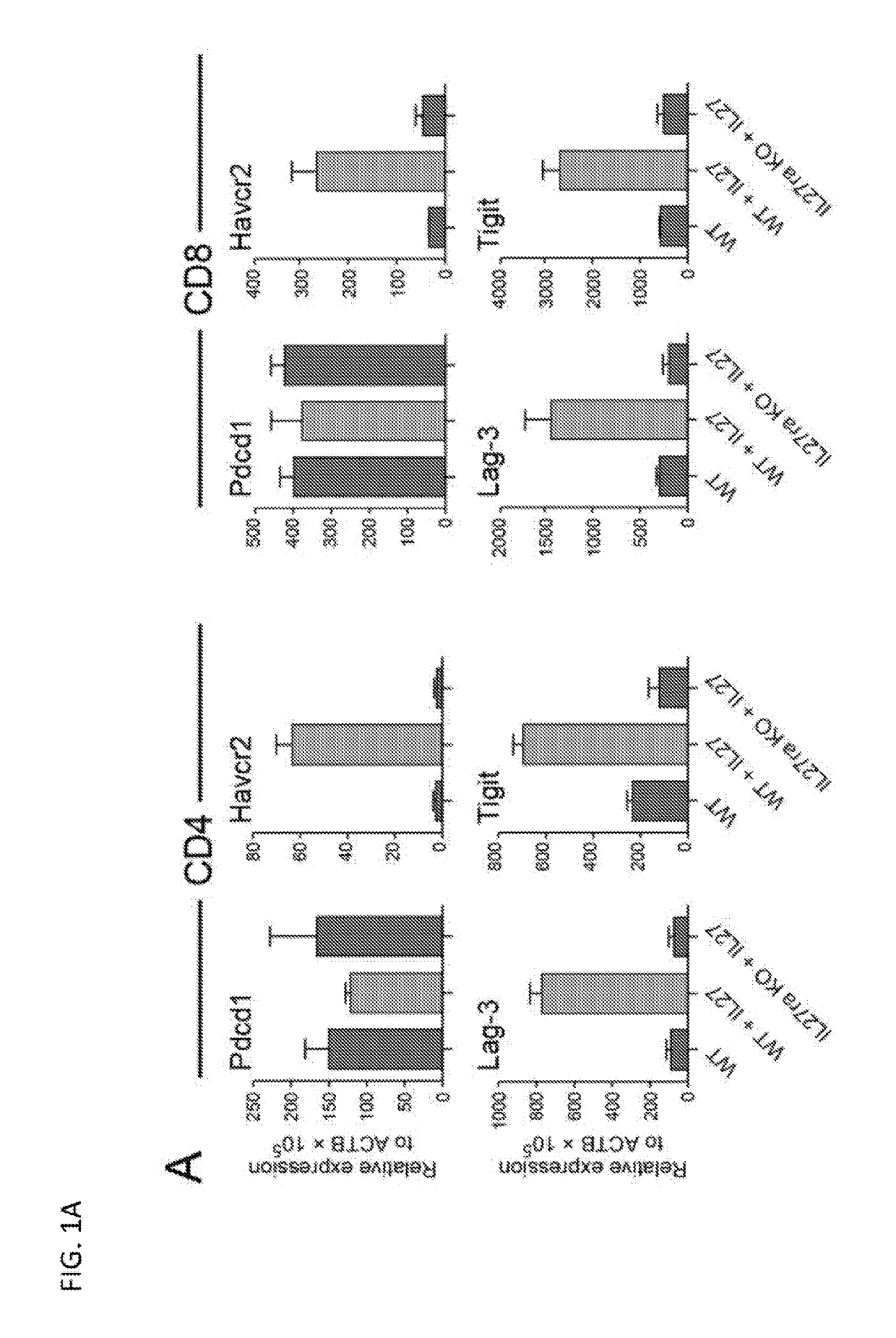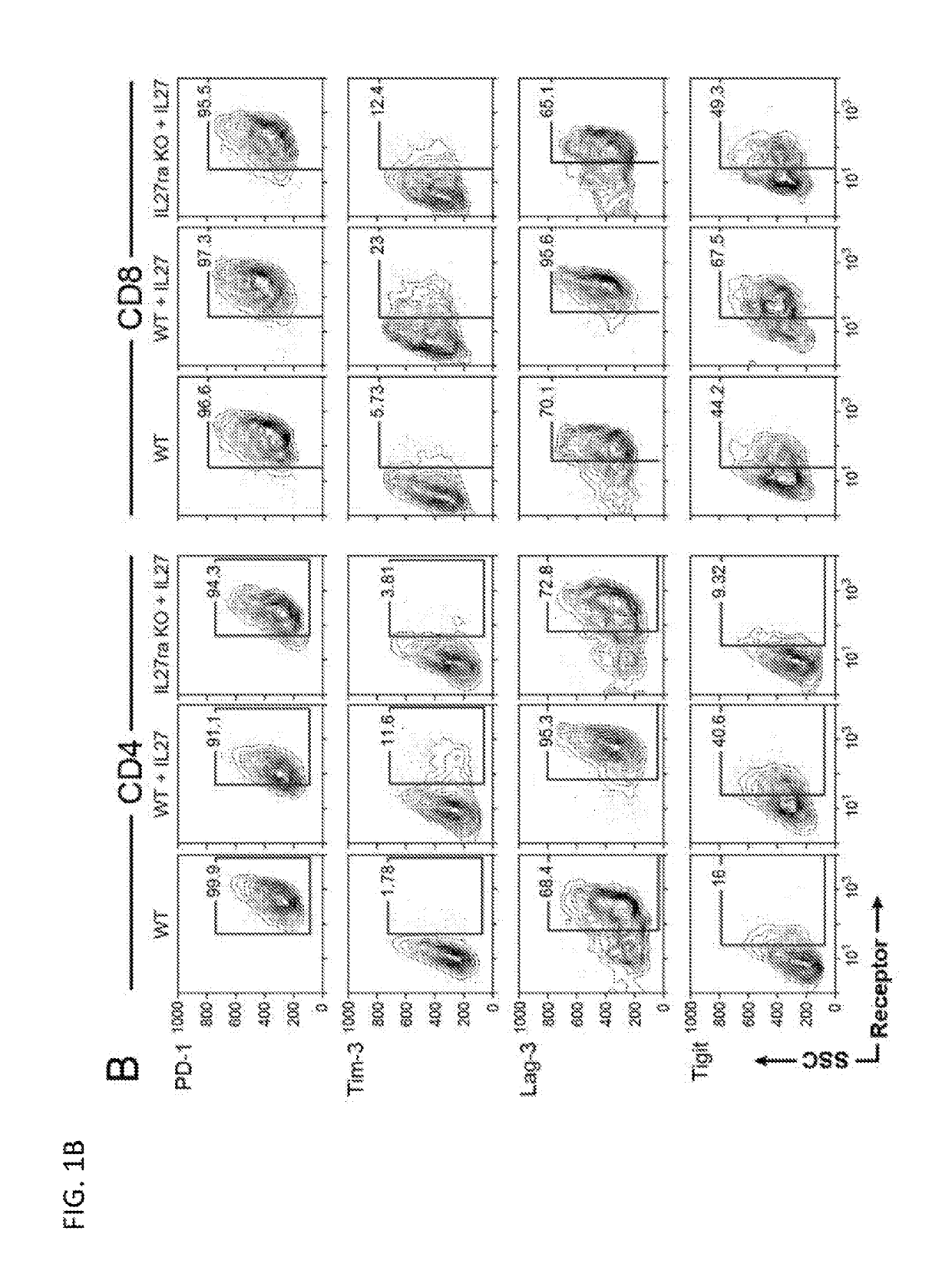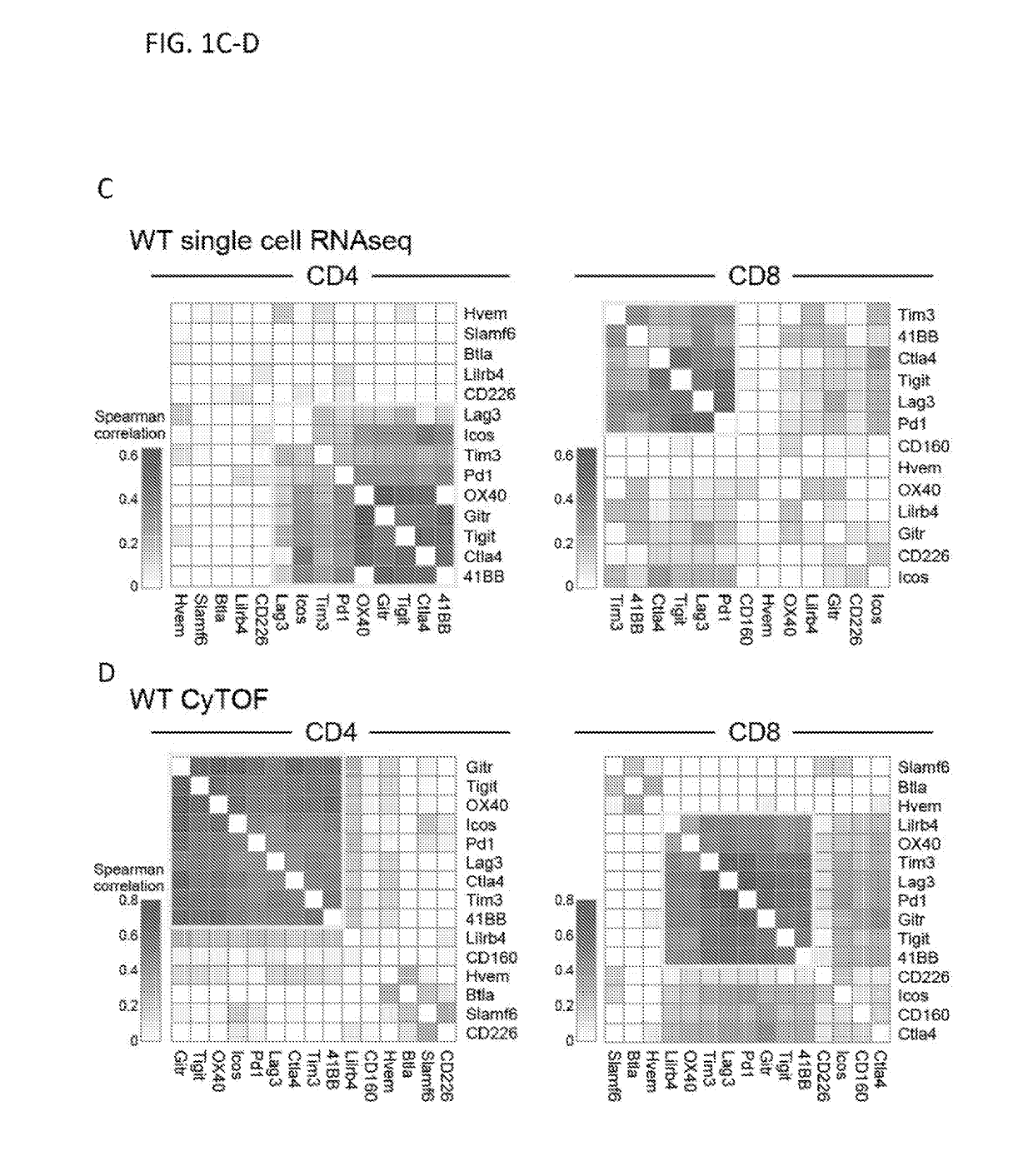Modulation of novel immune checkpoint targets
a technology of immune checkpoint and target, which is applied in the field of modulation of t cell dysfunction, can solve the problems of substantial number of patients not responding to immune checkpoint blockade, exhausted dysfunctional t cells are poor mediators of viral and/or tumor clearance, etc., to achieve the effect of reducing the phenotype of exhausted t cells, increasing t cell activation, and increasing the phenotype of exhausted
- Summary
- Abstract
- Description
- Claims
- Application Information
AI Technical Summary
Benefits of technology
Problems solved by technology
Method used
Image
Examples
example 1
tal Results
[0722]IL-27 Induces a Co-Expressed Set of Co-Inhibitory Receptors Associated with T Cell Dysfunction on CD4 and CD8 T Cells.
[0723]Recent studies have demonstrated that IL-27 induces the expression of co-inhibitory cell-surface receptors, such as Tim-3 and PD-L1, on CD4+ and CD8+ T cells (Hirahara et al., (2012) Immunity 36, 1017-30; Zhu et al., (2015) Nature communications 6, 6072). Together with evidence supporting a key role for IL-27 in driving resolution of tissue inflammation (e.g., Awasthi et al., (2007) Nature immunology 8, 1380-1389; Hirahara et al., (2012) Immunity 36, 1017-30; Stumhofer et al., (2007) Nature immunology 8, 1363-1371; Fitzgerald et al., (2007b) Nature immunology 8, 1372-1379), Applicants hypothesized that IL-27 might induce expression of additional co-inhibitory receptors in T cells. Accordingly, it was examined whether activation of naïve CD4 and CD8 T cells in the presence of IL-27 induced additional co-inhibitory molecules.
[0724]Indeed, Applica...
example 2
[0760]Mice:
[0761]C57BL / 6 wild-type (WT), IL-27ra KO (WSX-1− / −), and Prdm1 fl / fl mice were obtained from the Jackson Laboratory (Bar Harbor, Me.). c-Maf fl / fl, Pdpn fl / fl mice and Procr delta / delta mice were previously described (Castellino et al., 2002; Peters et al., 2015; Wende et al., 2012). Pdpn fl / fl mice were initially obtained from Christopher Buckley (Univerity of Birmingham, Birmingham, UK) and crossed to CD4Cre mice to obtain conditional CD4 and CD8 T cell gene knock-out mice. CD4Cre mice were purchased from Taconic (Hudson, N.Y.). Prdm1 fl / fl and c-Maf fl / fl mice were crossed to CD4Cre mice to generate doubly deficient T cell conditional knockout mice. All experiments were performed in accordance to the guidelines outlined by the Harvard Medical Area Standing Committee on Animals (Boston, Mass.).
[0762]Flow Cytometry:
[0763]Single cell suspensions were stained with antibodies against CD4 (RM4-5), CD8 (53-6.7), PD-1 (RMP1-30), Lag-3 (C9B7W), TIGIT (GIGD7), and Tim-3 (5D12), ...
example 3
lates Dysfunction in CD8+ TILs and Marks a Novel Population with an Altered Functional Phenotype
[0796]CD39 (also known as ectonucleoside triphosphate diphosphohydrolase-1) is encoded by the gene ENTPD1. It is a cell surface protein with an extracellular catalytic site that catalyzes the hydrolysis of various P2 receptor ligands, including ATP, ADP, UTP and other phosphate containing molecules. The enzymatic activities of CD39, in conjunction with CD73, play a role in calibrating the duration, magnitude, and chemical nature of purinergic signals delivered to immune cells. As disclosed herein, CD39 and up-regulation of ENTPD1 is associated with several dysfunctional T cell states.
[0797]Applicants postulated that CD39 (i.e. ENTPD1) may be involved in regulating CD8+ T cell dysfunction. Applicants can validate that CD39 performs important functions for inducing T cell dysfunction, and more specifically, can determine whether modulating CD39 in T cells provides an enhanced immune respons...
PUM
 Login to View More
Login to View More Abstract
Description
Claims
Application Information
 Login to View More
Login to View More - R&D
- Intellectual Property
- Life Sciences
- Materials
- Tech Scout
- Unparalleled Data Quality
- Higher Quality Content
- 60% Fewer Hallucinations
Browse by: Latest US Patents, China's latest patents, Technical Efficacy Thesaurus, Application Domain, Technology Topic, Popular Technical Reports.
© 2025 PatSnap. All rights reserved.Legal|Privacy policy|Modern Slavery Act Transparency Statement|Sitemap|About US| Contact US: help@patsnap.com



